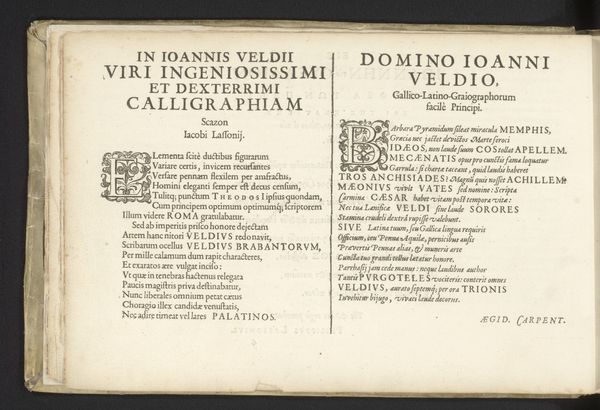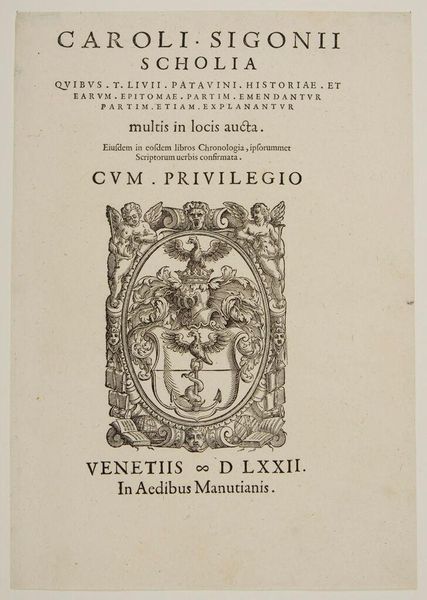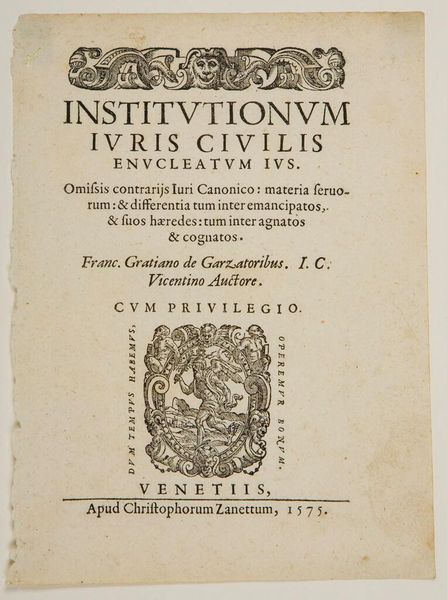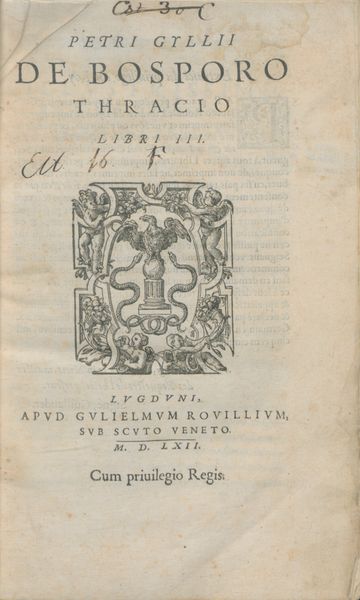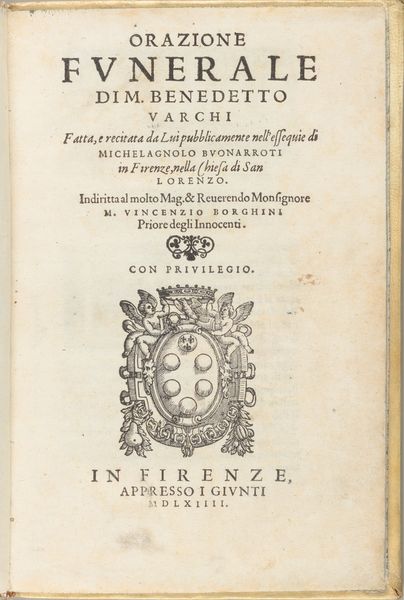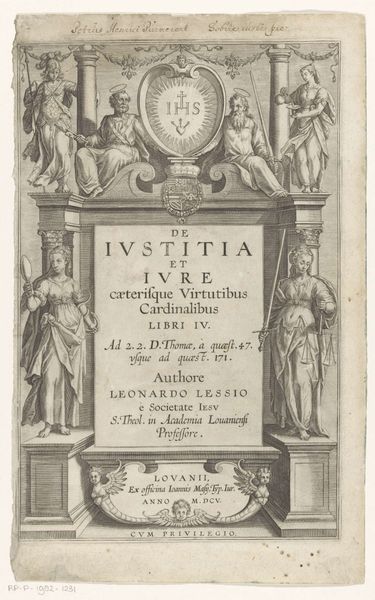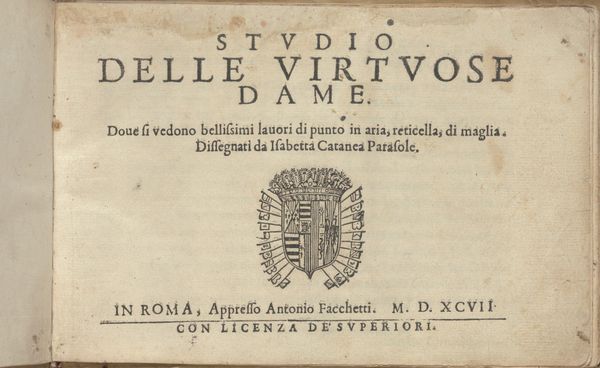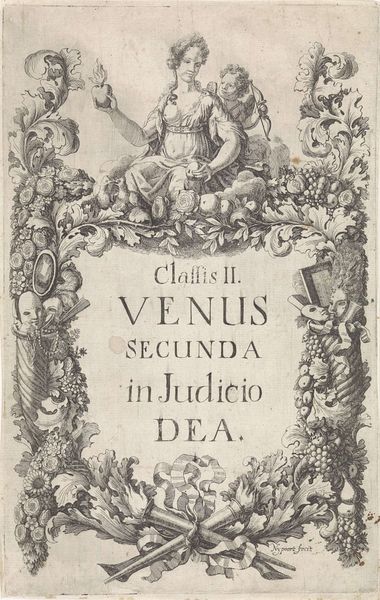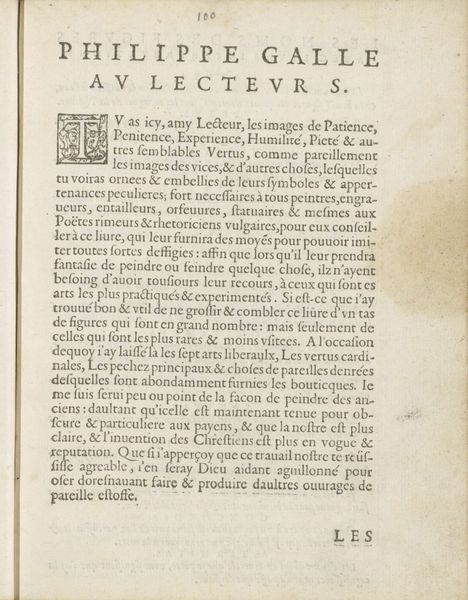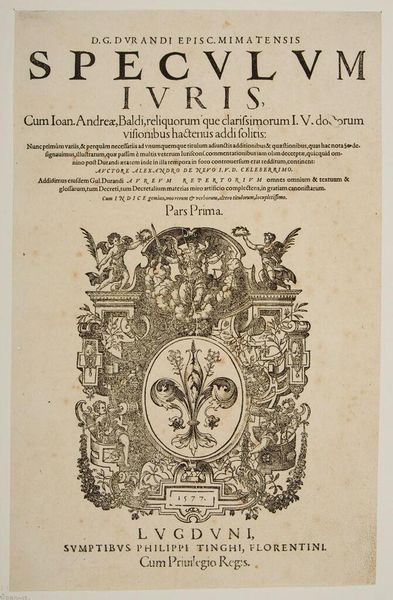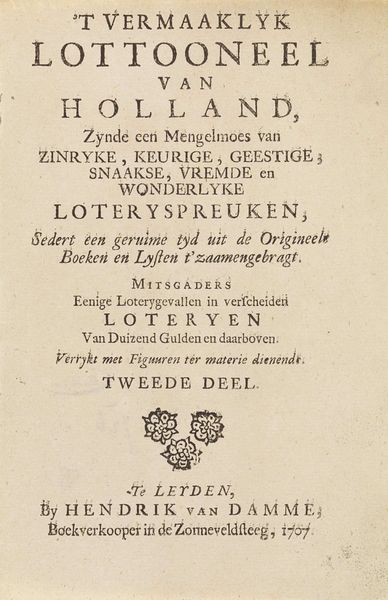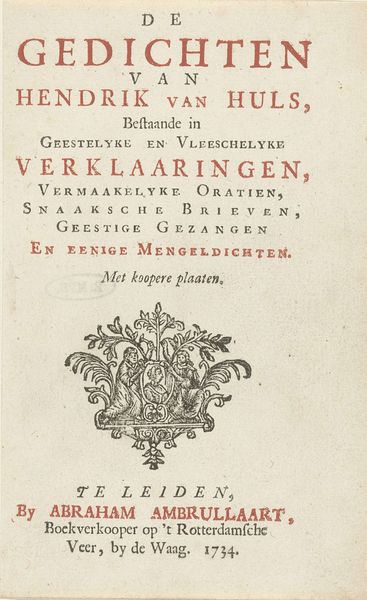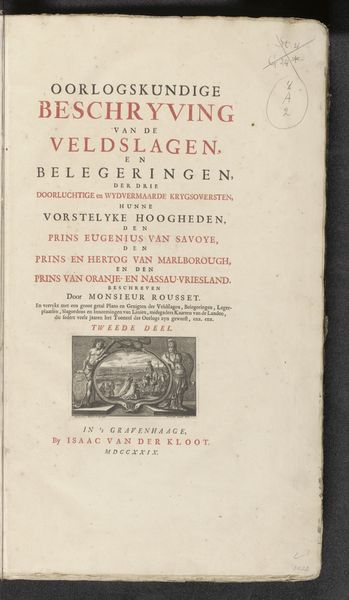
Titelpagina van Bernhard Siegfried Albinus' 'Dissertatio de arteriis et venis intestinorum hominis', 1736. 1736
0:00
0:00
print, typography, engraving
#
portrait
#
aged paper
#
baroque
# print
#
old engraving style
#
hand drawn type
#
typography
#
fading type
#
stylized text
#
thick font
#
handwritten font
#
golden font
#
classical type
#
engraving
#
historical font
Dimensions: height 260 mm, width 217 mm
Copyright: Rijks Museum: Open Domain
Editor: This is the title page of Bernhard Siegfried Albinus' "Dissertatio de arteriis et venis intestinorum hominis," from 1736. It's an engraving with a really fascinating Baroque sensibility. It has aged beautifully with the paper turning into a beautiful cream color and has a fascinating stylized text. What strikes me is how the design merges art, science, and typography. What do you find most compelling about it? Curator: The material production of this engraving is central to its meaning. Consider the labor involved in the design and execution. The engraver's skill translates Albinus's anatomical knowledge into a tangible object intended for dissemination, effectively democratizing it for his contemporaries. But what about the implications of this knowledge being printed and circulated in society? Editor: So, it’s about how information was controlled and distributed? The choice to create multiple, and I imagine cheap versions, compared to just having the information presented through direct, paid lectures? Curator: Precisely! Engravings like this mark a shift in knowledge accessibility, from privileged scholarly circles to a wider audience able to buy, consume, and, indeed, own printed matter. We should ask ourselves how it challenged traditional power structures by making anatomical knowledge more widely available, changing medical training and the social perception of the body? Also what the printing itself does to validate the information it's containing. Editor: That’s fascinating. I hadn't considered the revolutionary aspect of just being able to replicate something like this for larger consumption, thus disrupting established academic ecosystems. Curator: Exactly, seeing it this way we're examining not just the aesthetic qualities, but the work's social life, tracing its production, distribution, and eventual consumption. I hope it offers another angle on seeing how material conditions have historically altered cultural value.
Comments
No comments
Be the first to comment and join the conversation on the ultimate creative platform.

